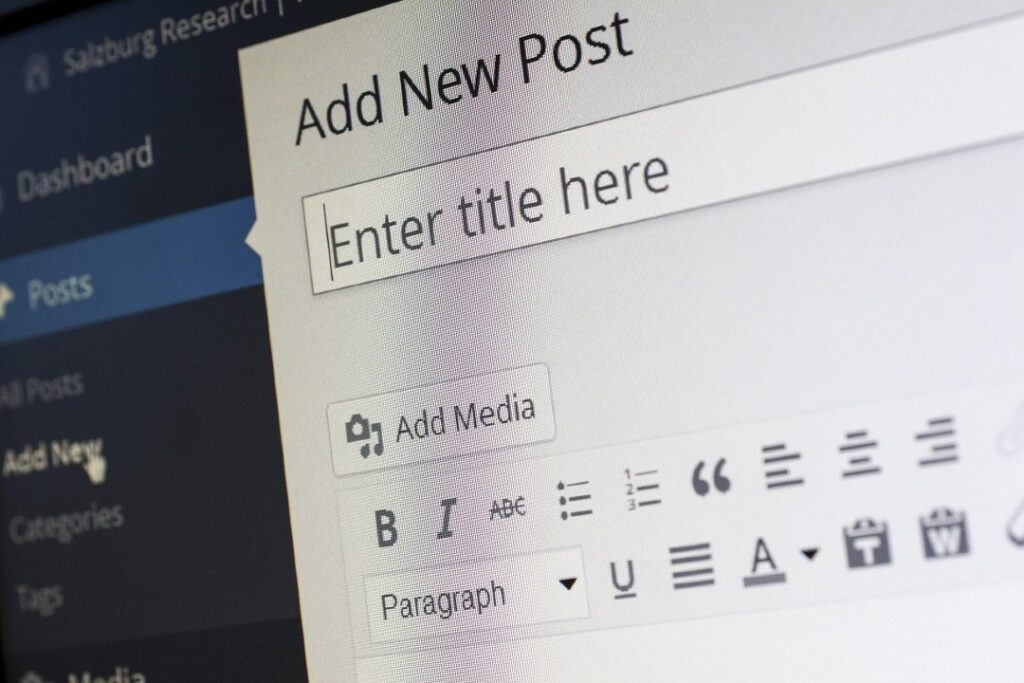Blogging can be an exciting yet overwhelming journey, especially for beginners who want to keep costs low while building a successful blog. Fortunately, there are numerous free resources available that can help with content creation, SEO, design, analytics, and more. Below is a detailed overview of the 10 best free resources for bloggers in 2025, tailored to help you start, grow, and optimize your blog without breaking the bank. Each resource is evaluated for its key features, benefits, and how it can specifically aid bloggers.
1. WordPress.com
WordPress.com is a leading free blogging platform that offers a user-friendly way to create and manage a blog without needing to pay for hosting or a domain initially. It’s ideal for beginners who want to focus on writing without technical setup hassles.
Key Features:
- Free hosting and a subdomain (e.g., yourblog.wordpress.com).
- Access to basic, customizable themes for a professional look.
- Built-in reader community to help your posts reach a wider audience.
- Basic analytics to track views and engagement.
- Mobile-friendly block editor for easy content creation.
Benefits for Bloggers:
- Quick setup with no coding knowledge required, perfect for new bloggers.
- Free plan allows unlimited posts, making it cost-effective for content-heavy blogs.
- The WordPress community provides a built-in audience, increasing discoverability.
Limitations: Limited customization on the free plan; monetization requires upgrading.
How to Use: Sign up at WordPress.com, choose a free theme, and start publishing posts. Use the block editor to create visually appealing content with text, images, and videos.
2. Google Analytics
Google Analytics is a free, industry-standard tool for tracking website performance, offering insights into traffic sources, audience behavior, and content engagement.
Key Features:
- Tracks visitor demographics, page views, and time spent on your blog.
- Identifies top-performing posts and traffic sources (e.g., organic, social, referral).
- Real-time analytics to monitor live user activity.
- Integrates easily with WordPress and other platforms.
Benefits for Bloggers:
- Helps you understand what content resonates with your audience, allowing you to tailor future posts.
- Tracks the effectiveness of marketing campaigns or social media efforts.
- Free and robust, suitable for bloggers of all levels.
Limitations: Can be overwhelming for beginners due to its extensive data; requires setup with your blog.
How to Use: Create a Google Analytics account, add your blog’s tracking code, and monitor performance via the dashboard. Use reports to identify high-traffic posts or underperforming pages.
3. Canva
Canva is a free graphic design tool that enables bloggers to create stunning visuals, such as blog post images, social media graphics, and infographics, without design expertise.
Key Features:
- Drag-and-drop interface with thousands of free templates.
- Pre-sized templates for blog banners, Pinterest pins, and social media posts.
- Access to free stock photos, icons, and fonts.
- Basic photo editing tools (e.g., cropping, filters).
Benefits for Bloggers:
- Enhances blog posts with professional-looking visuals, increasing engagement.
- Saves time by offering ready-made templates optimized for SEO and social sharing.
- Free plan is robust enough for most blogging needs.
Limitations: Some premium elements require payment; advanced features need a Pro subscription.
How to Use: Sign up for a free Canva account, choose a template (e.g., “Blog Graphic”), customize with your text and images, and download for use on your blog or social media.
4. Grammarly (Free Version)
Grammarly is a free writing assistant that checks grammar, spelling, punctuation, and clarity, ensuring your blog posts are polished and professional.
Key Features:
- Real-time spelling and grammar corrections.
- Suggestions for sentence clarity and tone.
- Browser extension for writing directly in WordPress or Google Docs.
- Basic readability analysis.
Benefits for Bloggers:
- Improves the quality of your writing, making it more engaging and error-free.
- Helps non-native English speakers or beginners write confidently.
- Integrates seamlessly with blogging platforms and social media tools.
Limitations: Advanced features (e.g., style suggestions) require a premium subscription.
How to Use: Install the Grammarly browser extension or use the web editor. Paste your blog post or write directly, and apply Grammarly’s suggestions to refine your content.
5. Hemingway Editor
Hemingway Editor is a free web-based tool that analyzes your writing for readability, highlighting complex sentences, passive voice, and adverbs to improve clarity.
Key Features:
- Assigns a readability score to your content.
- Highlights sentences that are hard to read or overly complex.
- Suggests simpler alternatives for words and phrases.
- Free to use online without registration.
Benefits for Bloggers:
- Ensures your blog posts are easy to read, improving user experience and SEO.
- Helps craft concise, impactful content that retains reader attention.
- Ideal for beginners who struggle with editing their own work.
Limitations: Lacks advanced grammar checks compared to Grammarly; no mobile app.
How to Use: Visit the Hemingway Editor website, paste your blog post, and revise based on highlighted suggestions. Aim for a readability score of Grade 6-8 for broad audiences.
6. Google Keyword Planner
Google Keyword Planner is a free tool within Google Ads that helps bloggers find relevant keywords to optimize their content for search engines.
Key Features:
- Provides keyword ideas based on your niche or seed terms.
- Shows monthly search volume and competition levels (low, medium, high).
- No daily search limits, unlike some other free keyword tools.
- Integrates with Google Ads but usable without running ads.
Benefits for Bloggers:
- Helps identify high-traffic, low-competition keywords to boost SEO.
- Guides content creation by revealing what your audience is searching for.
- Free and accessible with a Google account.
Limitations: Less detailed than paid tools like Ahrefs; requires a Google Ads account.
How to Use: Sign into Google Ads, access Keyword Planner, enter a seed keyword (e.g., “blogging tips”), and explore keyword ideas. Incorporate high-volume, low-competition keywords into your posts.
7. Yoast SEO (Free Version)
Yoast SEO is a free WordPress plugin that guides bloggers in optimizing their posts for search engines and improving readability.
Key Features:
- Provides real-time SEO feedback (e.g., keyword density, meta descriptions).
- Analyzes content readability and suggests improvements.
- Generates XML sitemaps for better search engine indexing.
- Integrates with Google Search Console.
Benefits for Bloggers:
- Simplifies SEO for beginners with clear, actionable advice.
- Helps improve post structure for better ranking potential.
- Free version is sufficient for most new bloggers.
Limitations: Advanced features (e.g., internal linking suggestions) require a premium upgrade.
How to Use: Install Yoast SEO on your WordPress blog, enter a focus keyword for each post, and follow the plugin’s checklist to optimize content and meta tags.
8. Pixabay
Pixabay is a free stock photo and video platform offering high-quality, royalty-free images for bloggers to use in posts or social media.
Key Features:
- Over 2 million free images, videos, and illustrations.
- No attribution required for commercial or personal use.
- Searchable by category, style, or keyword.
- Basic editing tools within the platform.
Benefits for Bloggers:
- Enhances blog posts with visually appealing, professional images at no cost.
- Saves time compared to creating custom graphics.
- Safe for commercial use, avoiding copyright issues.
Limitations: Popular images may be overused; limited unique options compared to paid platforms.
How to Use: Visit Pixabay, search for images relevant to your blog post (e.g., “travel”), download high-resolution files, and add them to your posts or social media.
9. Mailchimp (Free Plan)
Mailchimp is a free email marketing platform that helps bloggers build and manage email lists to engage their audience.
Key Features:
- Free plan supports up to 500 subscribers and 1,000 monthly emails.
- Drag-and-drop email builder for newsletters.
- Basic automation (e.g., welcome emails).
- Analytics to track open rates and clicks.
Benefits for Bloggers:
- Builds a loyal audience by sending regular updates or newsletters.
- Easy to use for beginners with no email marketing experience.
- Free plan is sufficient for new bloggers with small audiences.
Limitations: Limited automation and advanced features in the free plan; subscriber limits may restrict growth.
How to Use: Sign up for Mailchimp, create a free account, set up a signup form on your blog, and send newsletters with new posts or promotions.
10. AnswerThePublic
AnswerThePublic is a free tool that generates content ideas by showing questions, prepositions, and related searches based on a keyword.
Key Features:
- Visualizes search queries as questions, comparisons, or related terms.
- Free version allows limited daily searches.
- Covers multiple languages and regions.
- Exports data for easy reference.
Benefits for Bloggers:
- Uncovers what your audience is searching for, inspiring relevant blog topics.
- Helps create FAQ sections or long-tail keyword content for SEO.
- Free and intuitive, ideal for brainstorming.
Limitations: Limited searches per day; advanced features require a paid plan.
How to Use: Enter a keyword (e.g., “blogging”) on AnswerThePublic, review the generated questions (e.g., “how to start blogging”), and use them to plan blog posts or optimize existing content.
Tips for Maximizing These Resources
Combine Tools for Efficiency: Use Google Keyword Planner and AnswerThePublic to identify topics, Yoast SEO to optimize posts, and Canva/Pixabay for visuals.
Track Progress: Regularly check Google Analytics to refine your content strategy based on what drives traffic.
Engage Your Audience: Use Mailchimp to send consistent newsletters, keeping readers updated on new posts.
Polish Content: Run every post through Grammarly and Hemingway Editor to ensure clarity and professionalism.
Experiment with WordPress.com: Start with the free plan to test blogging, then consider upgrading or moving to self-hosted WordPress for more control.
By leveraging these free resources, you can build a professional, engaging, and optimized blog without financial strain.



